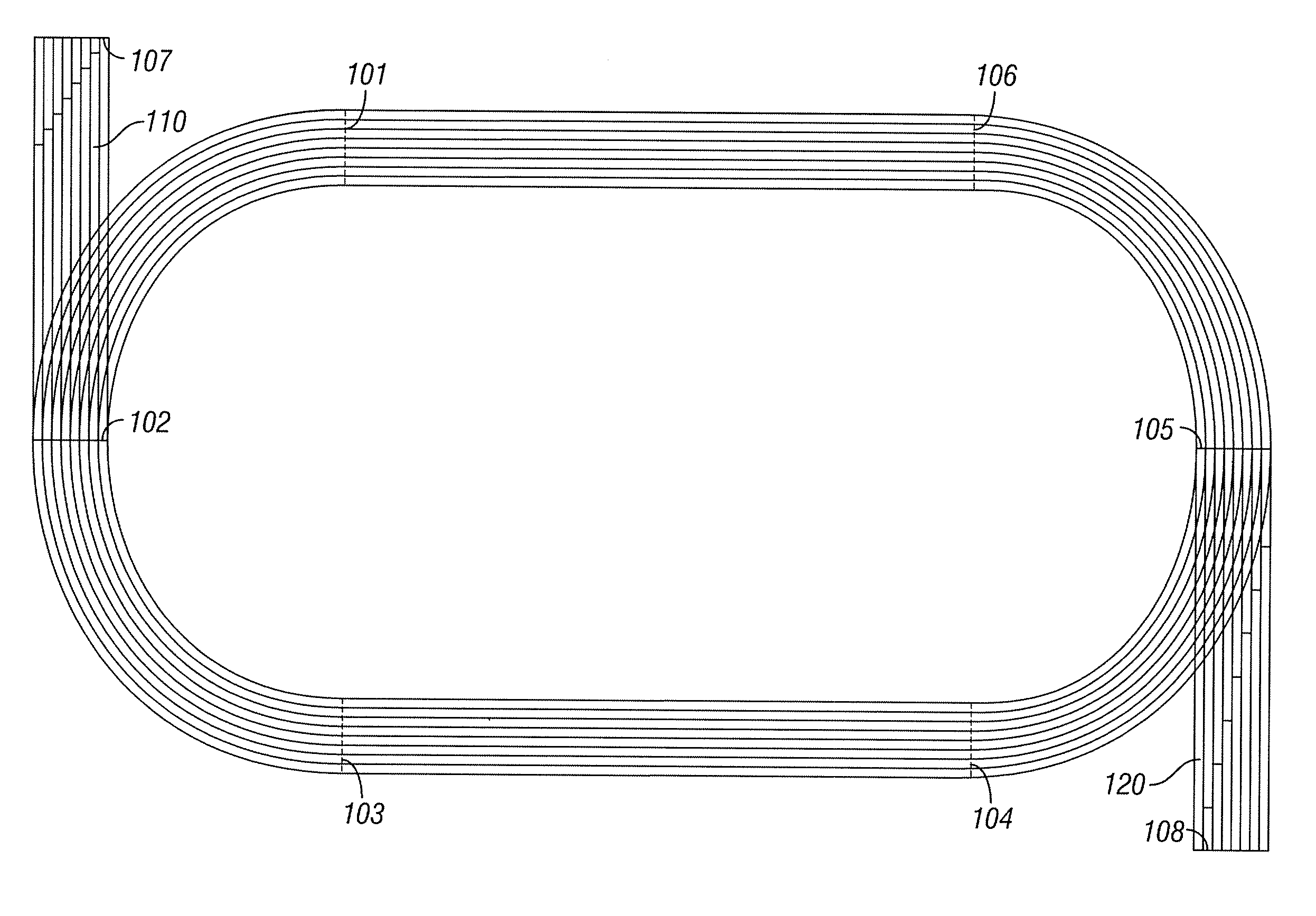Proposed running track design for fairer 200 m and 400 m races
a running track and race technology, applied in the field of race course design, can solve the problems of less thrust force available for increasing or maintaining speed, serious lack of parity between competitors in track events, and lack of parity, so as to eliminate the disproportionate effect of centrifugal for
- Summary
- Abstract
- Description
- Claims
- Application Information
AI Technical Summary
Benefits of technology
Problems solved by technology
Method used
Image
Examples
Embodiment Construction
Three-parameter Model
[0017] The inherent discrepancy that results due to lane assignment may also be observed though the use of a three-parameter model of sprinting. This model may be used to simulate 200 m runs in different lanes. Changing one parameter value (constant but not maximal thrust force) allows simulation of 400 m runs in different lanes. This model derives from earlier models proposed in Joseph B. Keller, “A Theory of Competitive Running,” Physics Today 26(9) pp. 42-47 (1973) (“Keller), and in Igor Alexandrov and Philip Lucht, “Physics of Sprinting,” American Journal of Physics 49 pp. 254-257 (1981) (“Alexandrov and Lucht”), each of which is hereby incorporated by reference in its entirety. One of the parameters is the maximum thrust force that a runner can exert; this parameter also appears in Keller and Alexandrov and Lucht. The second parameter characterizes the resistive force on a runner, which is assumed to be proportional to the square of the speed; the assumpti...
PUM
 Login to View More
Login to View More Abstract
Description
Claims
Application Information
 Login to View More
Login to View More - R&D
- Intellectual Property
- Life Sciences
- Materials
- Tech Scout
- Unparalleled Data Quality
- Higher Quality Content
- 60% Fewer Hallucinations
Browse by: Latest US Patents, China's latest patents, Technical Efficacy Thesaurus, Application Domain, Technology Topic, Popular Technical Reports.
© 2025 PatSnap. All rights reserved.Legal|Privacy policy|Modern Slavery Act Transparency Statement|Sitemap|About US| Contact US: help@patsnap.com



